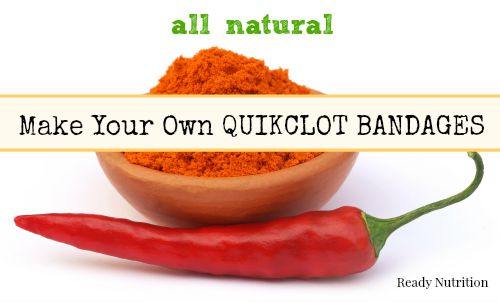
In a post-disaster environment, paramedics and medical response teams are inundated with emergency calls and assign degrees of urgency to emergency calls. If your call is not on the list of priority medical issues, then you will have to wait. Those who understand this know that in these times of crisis, we must become our own medics and know how to treat medical emergencies during disaster events.
Stopping a critical life threatening bleed is paramount in an emergency situation and, in some cases, takes precedence over airways and breathing. This is one of those medical issues that you need to know how to care for. One product that preppers like to have on hand are the Celox or QuikClot like bandages that help stop this type of excessive bleeding. These wound dressings contain a hemostatic agent in powder or granule form that is applied directly to a wound to help stop bleeding. These dressings are usually reserved for when a major artery has been severed and bleeding out is a concern.
A downside to this type of emergency wound dressing is it is extremely difficult to debride or clean out of a wound. As well, because you are introducing a foreign object into the body, it has the capacity of cause further irritation and possible infection. In fact, many complain that when they used QuikClot, it caused heat in the wound from the chemicals used. This can cause a lot of pain! Moreover, many turn to QuikClot wound dressings prematurely when applying direct pressure may have been the best approach. (continue reading)

